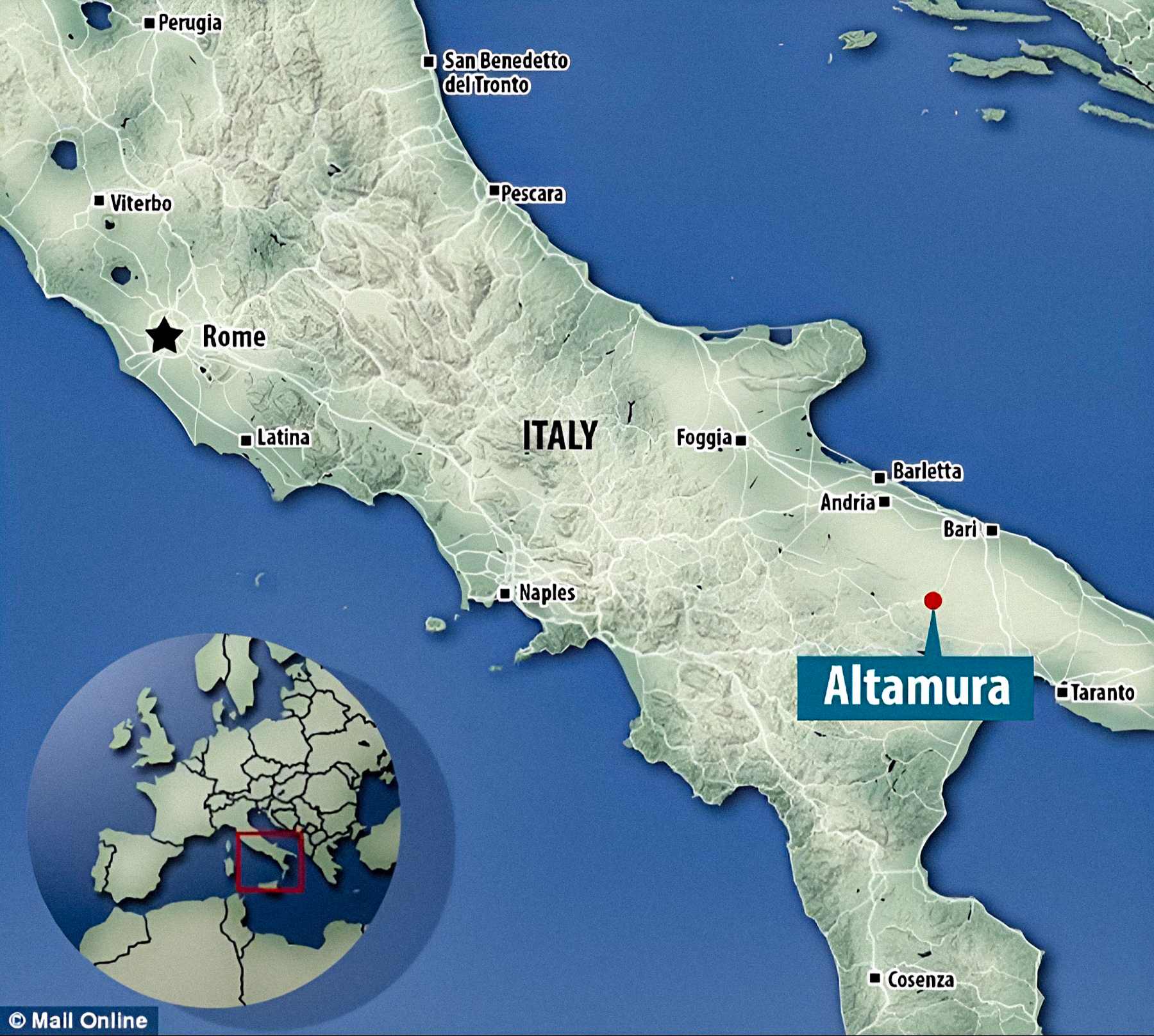Discovered in the year 1993, an extraordinary spectacle awaited explorers within the depths of Altamura, a region located in the southern part of Italy. Deep within the confines of the Lamalunga cave, a remarkable formation resulting from a sinkhole, lay an impeccably preserved fossilized human skeleton, seamlessly infused into the surrounding rock.

Moreover, the remains were adorned with “cave popcorn,” which manifested as small, spot-like imprints on the bones. The “popcorn” appearance could be easily accounted for. When calcite dissolves in rainwater, it can subsequently accumulate on the surface of the cave floor or any other object present, such as a skull in this case.

According to Lee-Gray Boze, a physical scientist from the United States Geological Survey, cave popcorn typically forms in the damp sections of caves where water can flow along the surface. Many extensive cave systems tend to be arid, with certain exceptions, and these dry areas usually exhibit limited ornamentation. However, in humid regions, cave popcorn is a common feature, often indicative of a moist environment and the presence of air currents.
Boze further said that dripping water in various habitats can also contribute to popcorn formation, with the drops responsible for the creation of circular patterns around the sites where they fall.
Apart from its mouthwatering appearance, the popcorn helped a team in unraveling the probable cause of the individual’s demise.
“Faunal remains found in some of the galleries are often isolated bony elements accumulated in depressed areas of the cave, suggesting that they were transported and dispersed by water,” a team of scientists conducting research on the body suggested in their study published in the May 2015 Journal of Human Evolution. “This was not the case with the human skeleton, given that it is largely represented and concentrated in a small area. Thus, we may hypothesize that, after death and decomposition of the body, the skeleton collapsed where it has been found.”
The team posits that the man likely fell into a sinkhole and became trapped. There, he probably perished due to starvation or dehydration before being covered in popcorn and eventually found by scientists more than one hundred thousand years later. The Altamura man continued to hold a few surprises.
In order to preserve the integrity of the skeleton, it was left undisturbed, as any interference could cause irreparable damage. Scientists relied on on-site observations and photographs provided by others to study the body. When a sample from the skeleton, specifically a fragment of the shoulder blade, was extracted for analysis, they determined that it belonged not to a Homo sapiens, as previously theorized, but to a Neanderthal who met his fate somewhere between 128,000 and 187,000 years ago.

In 2020, a different team delved deeper into the examination of the man’s teeth and made an interesting discovery. The wear on his teeth indicated that he was an adult when he tragically passed away, although not elderly. Additionally, their findings revealed that one of his teeth had probably fallen out a couple of weeks prior to his death. This deduction was made based on the observation that the remaining teeth in the right maxillary arcade had sufficient time to adjust their positions in the dental arch.
The researchers included in their report that the tooth must have been lost a few weeks before the man’s demise, as there was only a preliminary stage of alveolar resorption – an extremely common and generally inevitable side effect of removing a tooth from its socket in the alveolar ridge.



